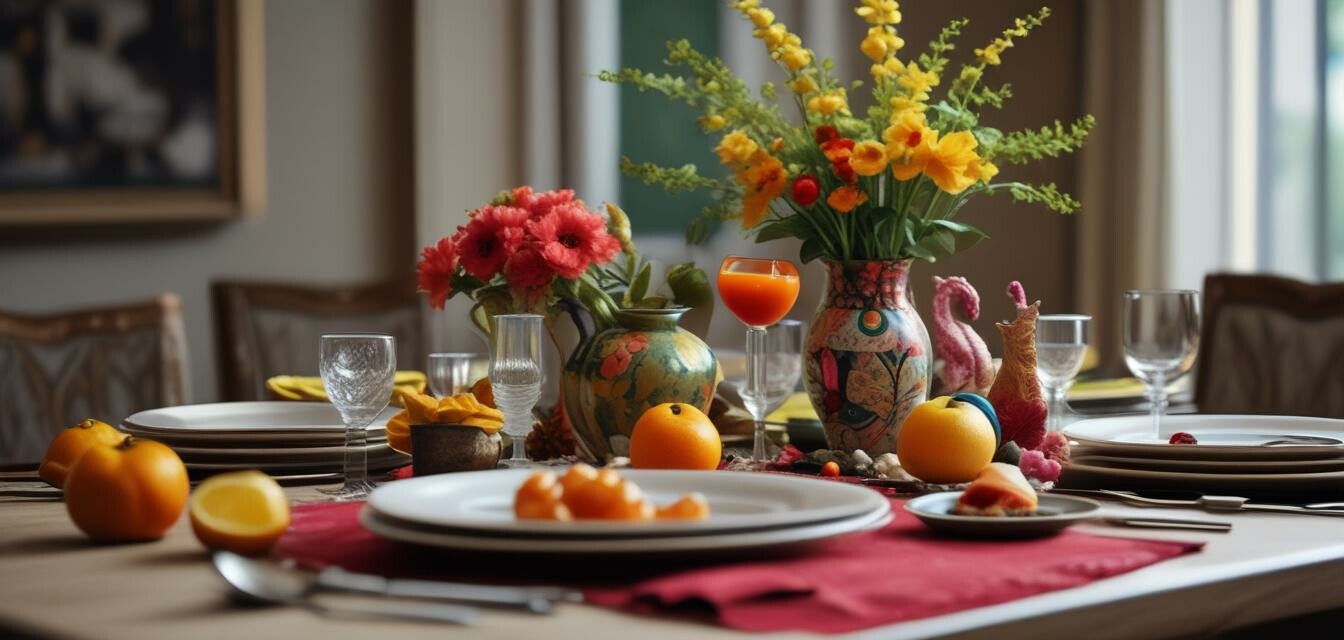
Creating a Cultural Dining Experience in Your Home
Key Takeaways
- Incorporating cultural elements enhances dining experiences.
- Colorful tableware and unique centerpieces create visual interest.
- Ambient lighting plays a significant role in setting the mood.
- Incorporate diverse cuisine styles to round out the experience.
- Be mindful of your guests’ preferences and cultural backgrounds.
Dining is not just about food; it’s about experience. By incorporating elements from various cultures into your dining setup, you can create a rich, diverse atmosphere that makes every meal feel special. This guide will provide you with tips to enhance your dining area and make it a cultural haven.
1. Choose a Theme
Choosing a theme is the first step to creating a cultural dining experience. You can focus on one culture or mix several together. Here are some popular themes you might consider:
- Asian Fusion
- Mediterranean Delight
- Latin American Fiesta
- African Safari
- European Elegance
2. Set the Tone with Colors
The colors you choose will set the tone for your dining experience. Colors inspire emotions and create an ambiance. Here’s how to use colors effectively:
| Culture | Color Palette |
|---|---|
| Asian | Red, gold, and black |
| Mediterranean | Blue, white, and sandy tones |
| Latin American | Bright colors like orange, yellow, and green |
| African | Earthy tones with vibrant accents |
| European | Pastels and muted colors |
3. Unique Tableware
The right tableware can make all the difference. Here are tips for selecting tableware that reflects cultural diversity:
- Choose handcrafted items from local artisans.
- Mix and match styles for an eclectic look.
- Use tableware that celebrates cultural heritage.
- Incorporate unique glassware inspired by different traditions.
4. Create an Ambiance
Setting the right ambiance is crucial for a cultural dining experience. Here are some ideas:
- Use soft, warm lighting with candles or lanterns.
- Incorporate music that reflects the theme.
- Add fresh flowers or culturally relevant decorations.
- Consider the table arrangement and spacing for comfort.
5. Incorporate Diverse Foods
Your menu is an essential part of the cultural dining experience. Try to integrate various foods that represent the cultures you’re paying homage to:
- Prepare a traditional dish from each culture.
- Offer a fusion dish that combines elements from different cuisines.
- Don’t forget to complement the meal with cultural beverages.
6. Include Cultural Traditions
Integrating cultural traditions can make your dining experience even richer. You might consider:
- Learning and sharing a traditional toast from the featured culture.
- Explaining the significance of each dish before serving.
- Engaging in a culturally relevant activity (like playing a game or storytelling).
7. Tailor the Experience
Lastly, it's essential to consider your guests’ backgrounds and preferences. Not everyone will have the same familiarity or taste in cultural foods.
Ensure you:
- Discuss dietary restrictions ahead of time.
- Provide alternatives for guests unfamiliar with certain foods.
- Be respectful of cultural nuances in dining etiquette.
Pros
- Enhances the dining experience.
- Encourages exploration of diverse cultures.
- Creates visually stunning table settings.
- Fosters deeper connections among guests.
Cons
- Requires extra planning and preparation.
- Possible dietary restrictions among guests.
- Cultural misinterpretations can occur.
Conclusion
Creating a cultural dining experience in your home is not just about food; it’s about celebration, connection, and exploration. Through thoughtful design, diverse cuisines, and a respectful understanding of different cultures, you can create an unforgettable experience for your family and friends.
For more inspiration on how to style your dining area, check out our Style Guides. If you're looking for sets that elevate your dining experience, view our Dining Room Sets that can complement your culturally themed settings.


